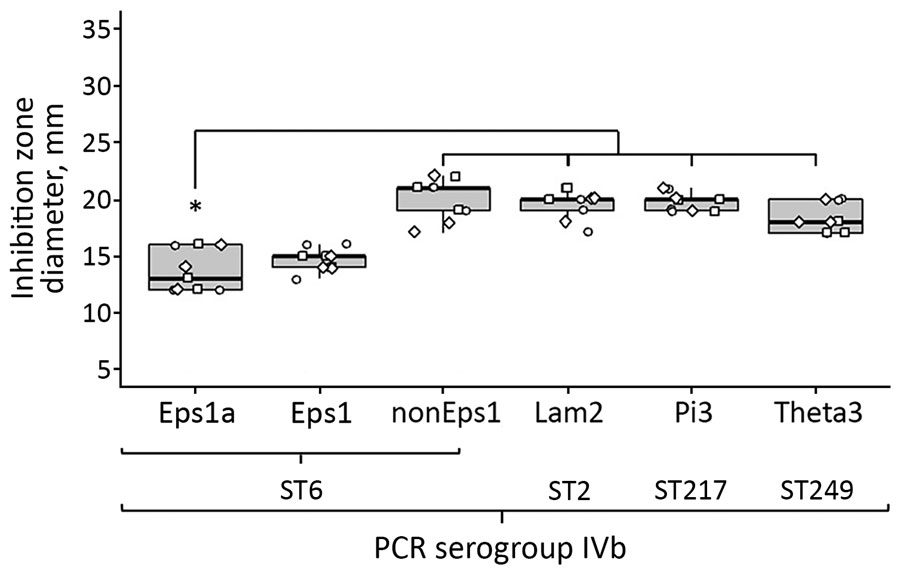Large Nationwide Outbreak of Invasive Listeriosis Associated with Blood Sausage, Germany, 2018–2019
Sven Halbedel
1
, Hendrik Wilking
1, Alexandra Holzer, Sylvia Kleta, Martin A. Fischer, Stefanie Lüth, Ariane Pietzka, Steliana Huhulescu, Raskit Lachmann, Amrei Krings, Werner Ruppitsch, Alexandre Leclercq, Rolf Kamphausen, Maylin Meincke, Christiane Wagner-Wiening, Matthias Contzen, Iris Barbara Kraemer, Sascha Al Dahouk, Franz Allerberger, Klaus Stark
2, and Antje Flieger
2
Author affiliations: Robert Koch Institute, Wernigerode, Germany (S. Halbedel, M.A. Fischer, A. Flieger); Robert Koch Institute, Berlin, Germany (H. Wilking, A. Holzer, R. Lachmann, A. Krings, M. Meincke, K. Stark); German Federal Institute for Risk Assessment, Berlin (S. Kleta, S. Lüth, S.A. Dahouk); Freie Universität Berlin, Berlin (S. Lüth); Austrian Agency for Health and Food Safety, Vienna, Austria (A. Pietzka, S. Huhulescu, W. Ruppitsch, F. Allerberger); European Centre for Disease Prevention and Control, Stockholm, Sweden (A. Krings, M. Meincke); Institut Pasteur, Paris, France (A. Leclercq); Ministry for Environment, Agriculture, Conservation and Consumer Protection of the State of North Rhine-Westphalia, Düsseldorf, Germany (R. Kamphausen); State Health Office Baden-Wuerttemberg, Stuttgart, Germany (M. Meincke, C. Wagner-Wiening); Chemical and Veterinary Investigations Office, Fellbach, Germany (M. Contzen); Bavarian Health and Food Safety Authority, Oberschleißheim, Germany (I.B. Kraemer); Rheinisch-Westfälische Technische Hochschule, Aachen, Germany (S.A. Dahouk)
Main Article
Figure 3

Figure 3. Tolerance of isolates of Listeria monocytogenes from subcluster Epsilon1a in Germany to benzalkonium chloride. Three representative isolates from human listeriosis clusters Epsilon1a, Epsilon1, and distinct listeriosis clusters Lambda2 (ST2, CT2402), Pi3 (ST217, CT5744), or Theta3 (ST249, CT4449) were tested for resistance to benzalkonium chloride by disc diffusion, along with 3 representative ST6 isolates, not belonging to Epsilon1. Epsilon1a and Epsilon1 isolates showed increased resistance to benzalkonium chloride. Circles, squares, and diamonds represent results of 3 independent replicates for 3 isolates per group. Asterisk indicates statistically significant differences to Epsilon1a (p<0.01) calculated by using the Student t-test. CT, complex type; Eps1, Epsilon1; Eps1a, Epsilon1a; Lam2, Lambda2; nonEps1, nonEpsilon1; ST, sequence type.
Main Article
Page created: April 27, 2020
Page updated: June 18, 2020
Page reviewed: June 18, 2020
The conclusions, findings, and opinions expressed by authors contributing to this journal do not necessarily reflect the official position of the U.S. Department of Health and Human Services, the Public Health Service, the Centers for Disease Control and Prevention, or the authors' affiliated institutions. Use of trade names is for identification only and does not imply endorsement by any of the groups named above.
